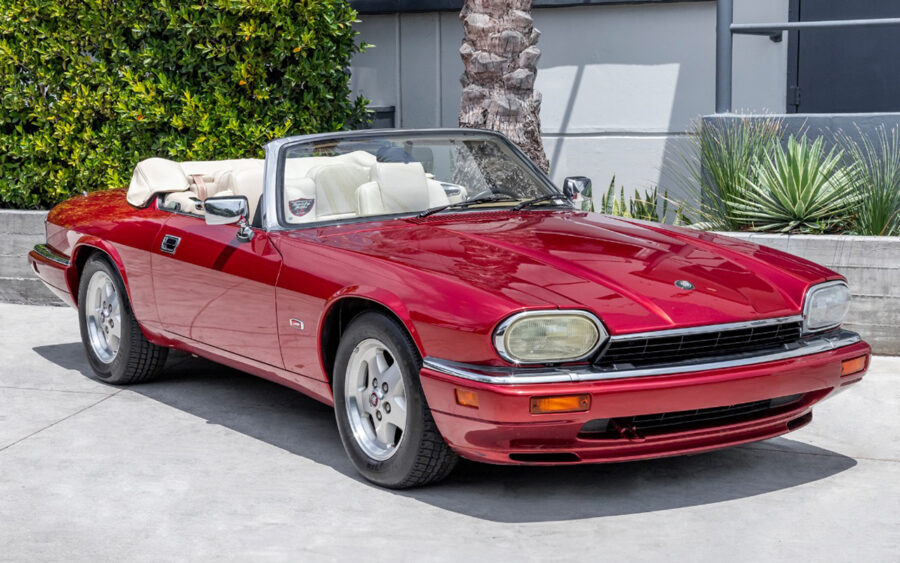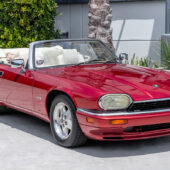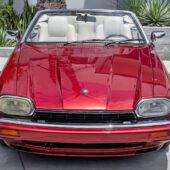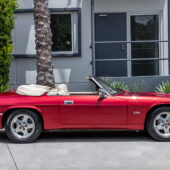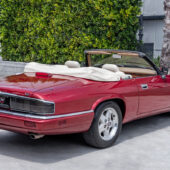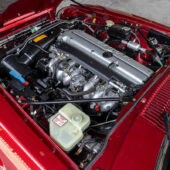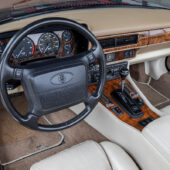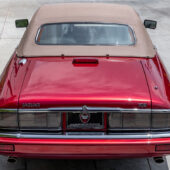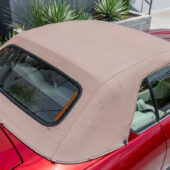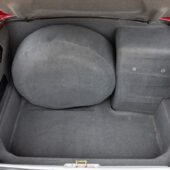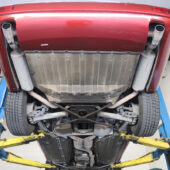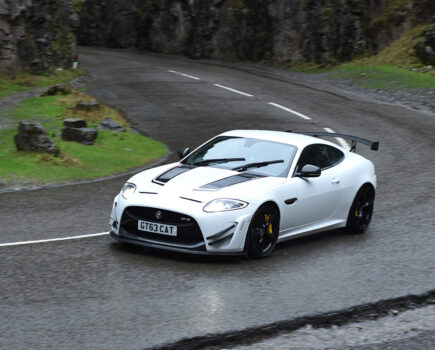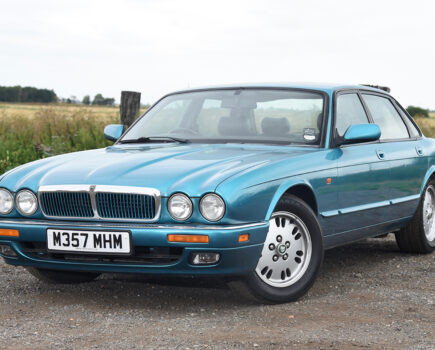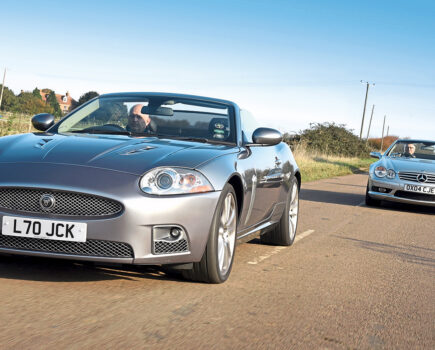The Jaguar XJ-S Convertible is still one of the best classic cruisers around. Here’s how to live with one
Sponsored editorial in association with Beverly Hills Car Club
Words: Sam Skelton
The XJ-S Convertible is the car that many think Jaguar should have launched in 1975. While a softer car than the outgoing E-Type and a grand tourer rather than a true sports car, much of the criticism levelled at the original XJ-S came from its lack of an open option, leaving specialist companies like Lynx or Hess & Eisenhardt to fill the gap. From 1988, however, Jaguar’s own in-house soft-top rendered all imitations useless.
Today, the XJ-S Convertible (and the subsequent facelifted XJS Convertible) offer one of the best-value ways into open-top Jaguar ownership. With brisk six-cylinder of silken V12 options, it’s one of the ultimate classics of its era and prices are likely to only go one way.
Initially, an open-top XJ-S was part of the development plan, but fears of legislation in America that would rule out the car’s primary market saw development paused to see how the wind would blow. When John Egan took over at Jaguar, he saw that the XJ-S needed a kick, and felt an open-top option was the way forward.
In the short term, that would be the XJ-SC, a made-to-order conversion of a part-finished coupe body which kept the window frames and added a T-bar for strength. But in 1985 a brief was issued that Jaguar wanted a full convertible for the 1988 Geneva Motor Show, to be available from May that year.
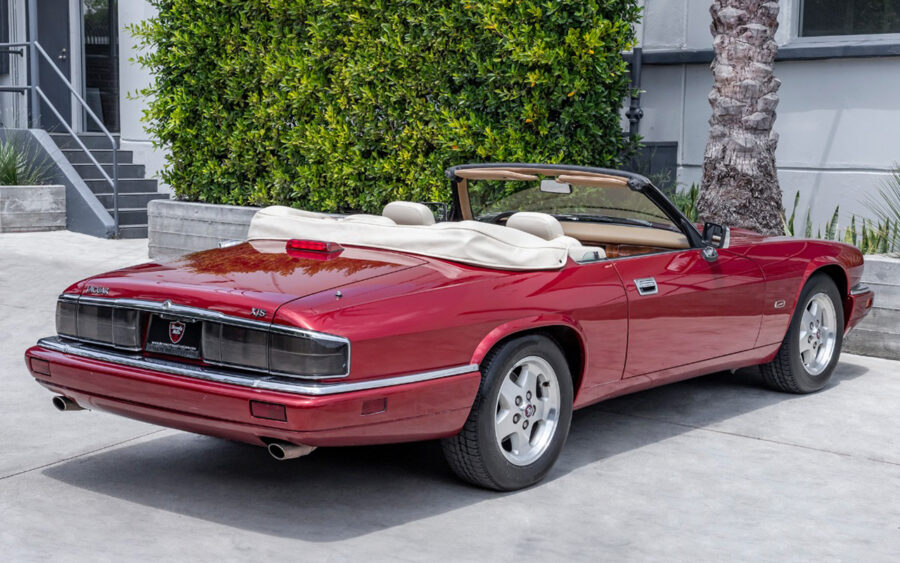
The XJ-S Convertible was launched in 1988, initially only in V12 form, to supplement and eventually supplant the XJ-SC. It did away with the targa roof and fixed side windows of its predecessor in favour of a full open model with pillarless window frames and a fully powered folding hood.
In 1992, both the six cylinder and V12 XJ-S were replaced by new, facelifted XJS models. The 3.6-litre engine was usurped by a 4.0 unit, and this would debut in a convertible body for 1992. Later that year, the 5.3-litre V12 would be replaced by a 6.0 unit. For 1993, revisions to packaging allowed the fitment of a rear seat.
The Celebration model of 1995 offered extra equipment including a half-wood steering wheel and alloy wheels borrowed from the XJR-S model, and it is these run-out versions that attract the most interest today. The last XJS models were produced in 1996, when production ceased to make way for the XK8.
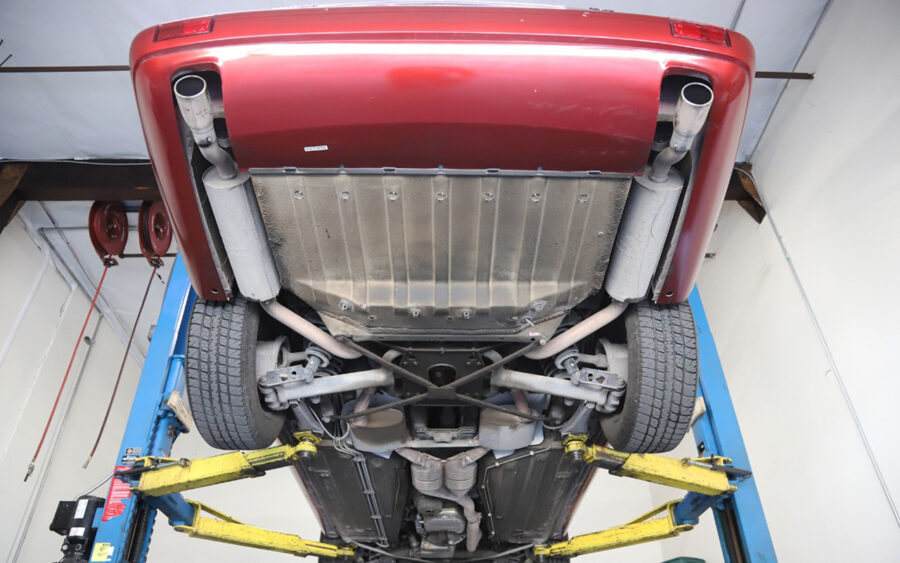
Engine, transmission and mechanicals
Looking after an XJS Convertible can be complicated or very simple, depending upon the model bought and your level of expertise. Six-cylinder cars are easily serviced and maintained at home, while the extra complexity and reduced access of the V12 means we’d recommend this only for advanced DIYers or those willing to use a specialist.
Bank on about £65 for a full service kit for a six-cylinder and around £130 for the V12 – bear in mind there’s effectively twice the engine there to service. That covers plugs and filters from a specialist such as Berkshire Jag Components. In addition to this, a six-cylinder will take around eight litres of oil and a V12 nearer to 10 litres.
All engines can suffer from timing chain rattles but this isn’t something to be unduly worried about. Meanwhile, both the three- and four-speed gearbox options are tried and trusted units, and with regular fluid changes shouldn’t give any major problems.
Mechanically, much of the car is similar to the Series 3 XJ12, albeit with engine ranges borrowed from the XJ40 and X300 saloons in six-cylinder models and later 6.0 V12s – so parts availability is generally good.
Various owners clubs can help with sourcing parts and general advice. The Jaguar Enthusiasts’ Club and Jaguar Drivers’ Club should be your first ports of call, along with the latter’s dedicated XJS Club sub-organisation.
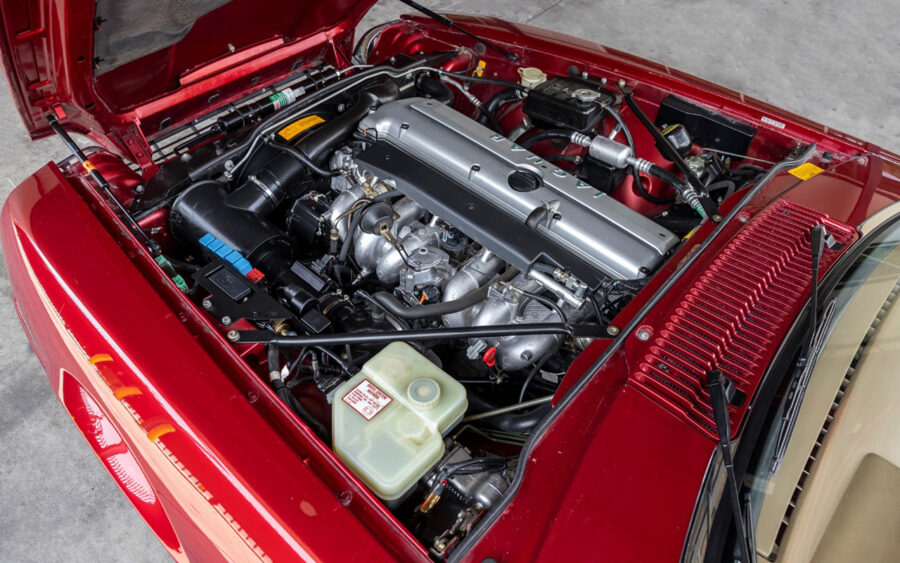
Bodywork and interior
If you have hood issues, leave them to a specialist trimmer or electrical expert. Ultimately, this is the only thing stopping the car from getting wet inside, and unless you have a garage it’s not worth having a go at home. A hood cover replacement is certainly a job we’d leave to the professionals.
Professional rust treatment would make sense if you want to use the car all year round – cavity wax injections and professional undersealing aren’t especially expensive and can help to keep your car in tip-top condition for as long as possible.
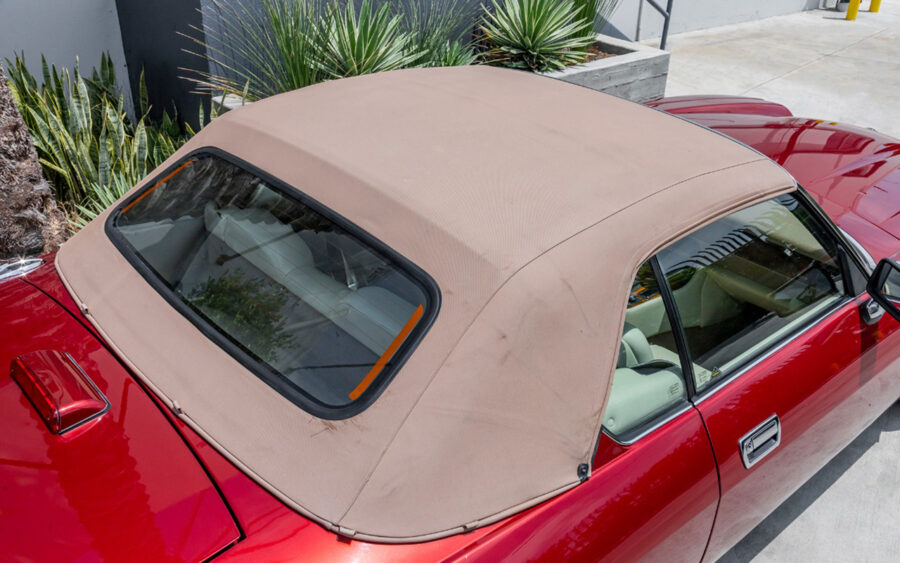
Finding a good example
A good XJ-S Convertible makes for the perfect summer cruiser; there are few classics that can munch miles quite like it. It’s important to buy on condition, avoiding rust and as comprehensive a service history as possible.
There are usually plenty of XJ-S examples in the UK classifieds at any one time but it’s not unheard of to look abroad for cars that may have lived in a drier climate and away from salty roads.
At time of writing, Beverly Hills Car Club has three examples for sale including the Flamenco Red car in our pictures, which previously lived in the dry state of New Mexico and has just 76,280 miles on the clock.
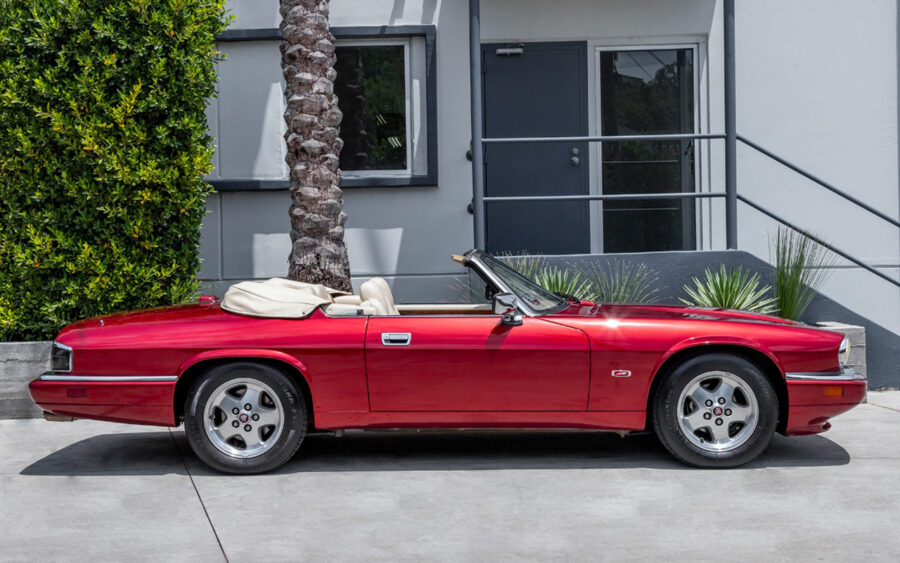
Sponsored by Beverly Hills Car Club
The automobiles sold at Beverly Hills Car Club combine all the elements of its exclusive address in Los Angeles: cars for sale that are the very last word in tasteful elegance, chic and impressive sophistication, with careful attention given to each vehicle and each client. Both national and international customers are catered for, with a huge stock of classics to choose from.
For more information and to view the Beverly Hills Car Club stock, visit www.beverlyhillscarclub.com

